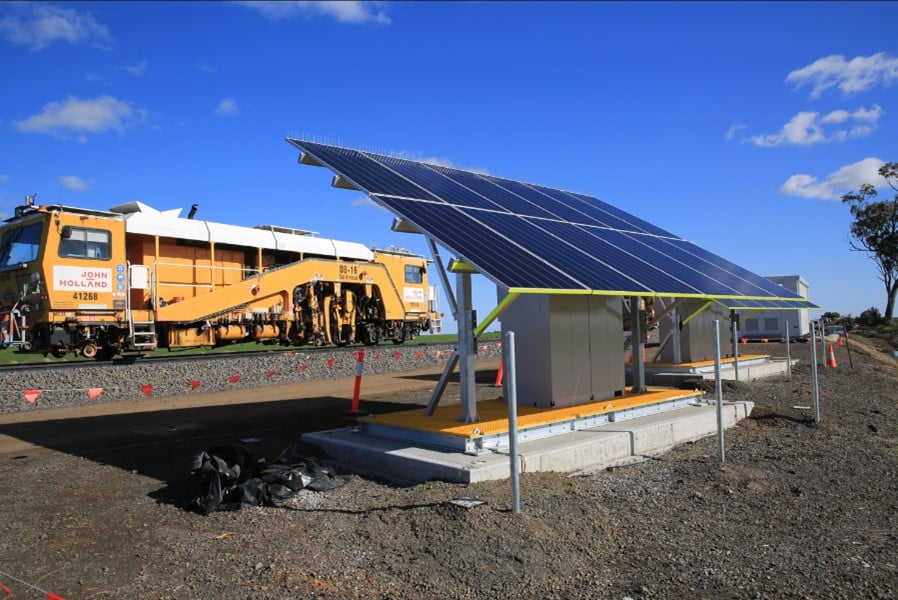The federal government-owned Australian Rail Track Corporation (ARTC) has confirmed that it will utilise ground-mounted solar arrays coupled with battery energy storage systems to power more than 80 signalling sites dotted along the rail corridor when the Inland Rail line becomes operational.
Following a successful trial of a solar-powered signalling system at Coolleearlee, about 50km from Moree in northern New South Wales (NSW), ARTC has approved its use at the remaining 82 signalling sites that will operate along the rail corridor from Albury in the state’s south to Gowrie in southeast Queensland.
The Albury to Gowrie stretch is part of the ambitious Inland Rail project, a 1727-kilometre railway line that will connect the ports of Melbourne and Brisbane along a new route west of the Great Dividing Range. The line, which will bypass the Sydney metropolitan area, will also connect to the Sydney-Perth rail corridor.
Construction of the project commenced in 2018 and it was originally due to be completed in 2025 but the project has been beset by budget blowouts and construction delays. While there is no definitive date for completion of the project, ARTC has switched to a solar-powered signalling system in a move that will help deliver savings.
ARTC Inland Rail Acting Chief Executive Rebecca Pickering said using the solar and battery energy storage systems rather than mains power for the signalling system provides significant savings for the project with the move eliminating the need to use the local power infrastructure, or to acquire easements to deliver mains power services to the signalling sites.
“Using solar power also saved ARTC around $300,000 in costs, mostly savings from not building a new transmission line to connect to the electricity network and a reduction in trackside infrastructure associated with mains equipment, and over $10,000 per year in operational electricity cost savings,” she said.
“We also use remote monitoring technology on these solar powered signalling installations, which adds further savings by reducing the requirement for maintenance visits.”
If those savings are replicated across the additional 82 signalling sites, the switch to solar backed by battery energy storage will provide an estimated $25 million cost reduction for the project.
ARTC said the capacity of the individual solar generation and energy storage systems vary but Inland Rail’s communication and wayside monitoring project manager Matt Brown said all have been designed to meet the corporation’s solar standard which is 10 days of autonomy.
“The solar system is designed with battery back-up that provides for 10 days of back-up operation and delivers a system which runs 24-hours a day, 365 days a year,” he said.
“Delivering power to rural signalling systems can be a real challenge so the successful completion of this solar-powered system in Coolleearlee is a great outcome.”
This content is protected by copyright and may not be reused. If you want to cooperate with us and would like to reuse some of our content, please contact: editors@pv-magazine.com.









Hi David
Thanks for this article.
ARTC was bombarding me with ads on SBS OnDemand in the lead-up to the last Federal election. I guess they had their motivations but I live in Perth. I finally caved and looked at their website. A search over the project website was silent on electrification of the rail corridor.
While PV powered signalling offers ARTC cost savings and regulatory obstacles with easements, the biggest energy consumption is diesel in the trains.
I look forward to hearing your future report about the BESS equivalent BERS (Battery Energy Rolling Stock) that explains the electric loco shunting with its on-board battery to pick up the (recharged) BERS for the next freight journey.
Harry